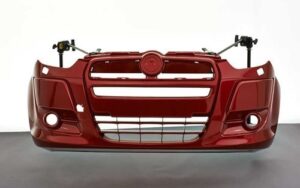This article by Greg Conrad appeared on the MANUFACTURING TOMORROW website
 Part 1 of 2 parts
Part 1 of 2 parts
The world has seen many intriguing manufacturing technologies so far, but 3D printing (or additive manufacturing) has really caught everyone’s attention over the past few years. 3D printing has opened up new opportunities for production, factory maintenance, and R&D, since acquiring spares for a machine has never been easier. 3D printing is a technology with a mixed impression, but most people are noticing that the pros will outweigh the cons.
3D Printing in R&D
Research and development departments require prototypes, often times, a lot of them. In a typical setup, prototypes are handcrafted or made from molds, which takes up a lot of the designer’s precious time. Using 3D printed prototypes, designers are able to save both time and money.
Prodrive is a company that manufactures equipment and technologies related to motorsports, and they have incorporated using 3D printing services for R&D for a long time now. Since 2009, Prodrive has been using 3D printing to create automobile models with Prodrive goodies installed providing the team with a better idea of the project in its entirety. It also gave the team a physical model to examine, not just a computer rendering. Many other companies have began seeing the potential of 3D printing models, even Aston Martin goes along the same path when it comes to an effective R&D strategy planning.
Additive Manufacturing
Additive Manufacturing seems to be quite the buzzword in today’s manufacturing industry. The usual manufacturing process is mostly a subtractive process, where the raw material gets wasted and reused over and over again. For example, in a car factory sheet metal is cut and shaped into specific body parts and leftover metal is later melted back down and formed into metal plates again before they can be reused for any further processes.
On the other hand, 3D printing is a very precise manufacturing process. Whatever is designed is 3D-printed using the raw materials, no cutting down, no leftover material, no need to reprocess the materials. Therefore, it’s only an additive process and not subtractive. By being an additive process, 3D manufacturing reduces material waste, as well as processing time and required equipment.




